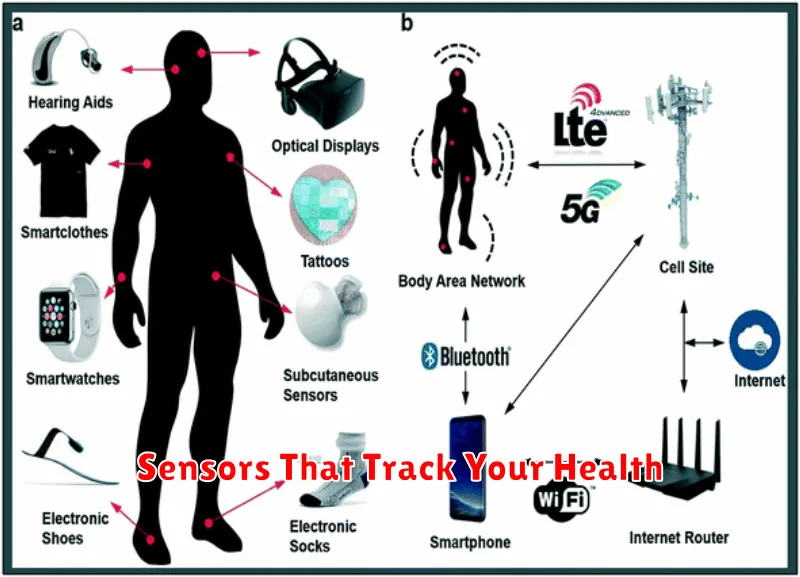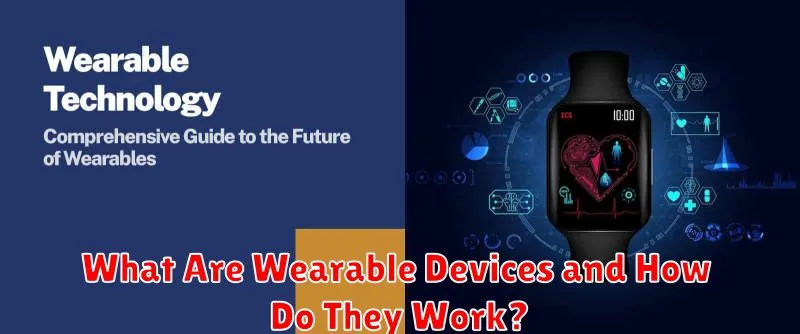Wearable devices, also known as wearables, are electronic devices worn on the body, either as accessories or integrated into clothing. These innovative technologies seamlessly blend into our daily lives, offering functionalities ranging from simple activity tracking to sophisticated health monitoring and communication features. From smartwatches and fitness trackers to smart glasses and augmented reality (AR) headsets, wearable devices are transforming how we interact with the world around us and even with our own bodies. Understanding what wearable devices are and how they function is increasingly crucial in our technologically-driven society.
This article explores the fascinating world of wearable devices, providing a comprehensive overview of their diverse forms and functionalities. We will delve into the underlying technology that powers these devices, examining the sensors, processors, and communication protocols that enable them to collect, analyze, and transmit data. Whether you’re curious about the latest wearable technology trends, considering purchasing your first wearable device, or simply seeking a deeper understanding of how these devices work, this article will provide valuable insights into the increasingly important role of wearables in our modern world.
Definition and Types of Wearables
Wearable devices, also known as wearables, are electronic devices worn close to the body, often incorporated into items like clothing, accessories, or implanted directly. They collect and process data, often communicating wirelessly with smartphones or other devices.
Wearables span a broad range of categories. Some prominent types include smartwatches (offering notifications, fitness tracking, and more), fitness trackers (specializing in activity and health monitoring), smart glasses (providing augmented reality or heads-up displays), hearables (earbuds with advanced functionality like biometric sensors or real-time language translation), and medical wearables (monitoring vital signs or delivering therapies).
Smartwatches, Bands, and Rings
Smartwatches are wrist-worn computers capable of running apps, displaying notifications, and often tracking fitness metrics. They offer a wider range of functionalities than simpler wearables.
Fitness bands, also known as activity trackers, primarily focus on monitoring health and fitness data like steps, heart rate, and sleep patterns. They are generally more affordable and have longer battery life than smartwatches.
Smart rings are a more discreet wearable option. They typically track similar metrics to fitness bands but in a smaller form factor. Some smart rings also offer contactless payment features.
Sensors That Track Your Health

Wearable devices utilize a variety of sensors to monitor various health metrics. Heart rate sensors, often optical or electrical, track your pulse. Accelerometers measure movement and activity levels, contributing to step counting and sleep tracking. Gyroscopes detect rotation and orientation, further refining motion analysis.
Some advanced wearables include blood oxygen saturation (SpO2) sensors, which estimate the percentage of oxygen in your blood. Electrocardiogram (ECG) sensors can detect electrical signals from the heart, potentially identifying irregularities. Other sensors, like skin temperature sensors, can provide additional insights into overall wellness.
Use Cases in Fitness and Medicine
Wearable devices have significantly impacted both the fitness and medical fields. In fitness, wearables provide data-driven insights into activity levels, heart rate, and sleep patterns, empowering users to make informed decisions about their training and overall health. They offer personalized feedback, motivating individuals to achieve fitness goals.
In medicine, wearables extend beyond basic fitness tracking. They assist in remote patient monitoring, enabling healthcare professionals to track vital signs and activity levels. This is particularly valuable for managing chronic conditions like diabetes and heart disease. Furthermore, some wearables can detect falls and other emergencies, providing a crucial safety net for vulnerable individuals.
Privacy Issues and Data Security
Wearable devices collect and transmit vast amounts of personal data, raising significant privacy concerns. This data often includes sensitive information like location, health metrics, and even sleep patterns. Data breaches are a major risk, potentially exposing this sensitive information to malicious actors.
Data security is paramount. Manufacturers must implement robust security measures to protect user data from unauthorized access and misuse. Furthermore, transparent data policies are essential. Users should be clearly informed about what data is collected, how it is used, and who it is shared with. User control over data sharing preferences is also crucial.
Future Trends in Wearable Tech
The future of wearable technology promises further integration into our daily lives. Miniaturization will lead to smaller, less obtrusive devices. We can anticipate advancements in energy efficiency, with longer battery life and potentially energy harvesting capabilities.
Advanced sensors will offer more sophisticated data collection for health monitoring, fitness tracking, and even environmental sensing. Integration with other technologies, such as augmented and virtual reality, will create immersive experiences. Finally, expect growth in personalized wearables, tailored to individual needs and preferences.

